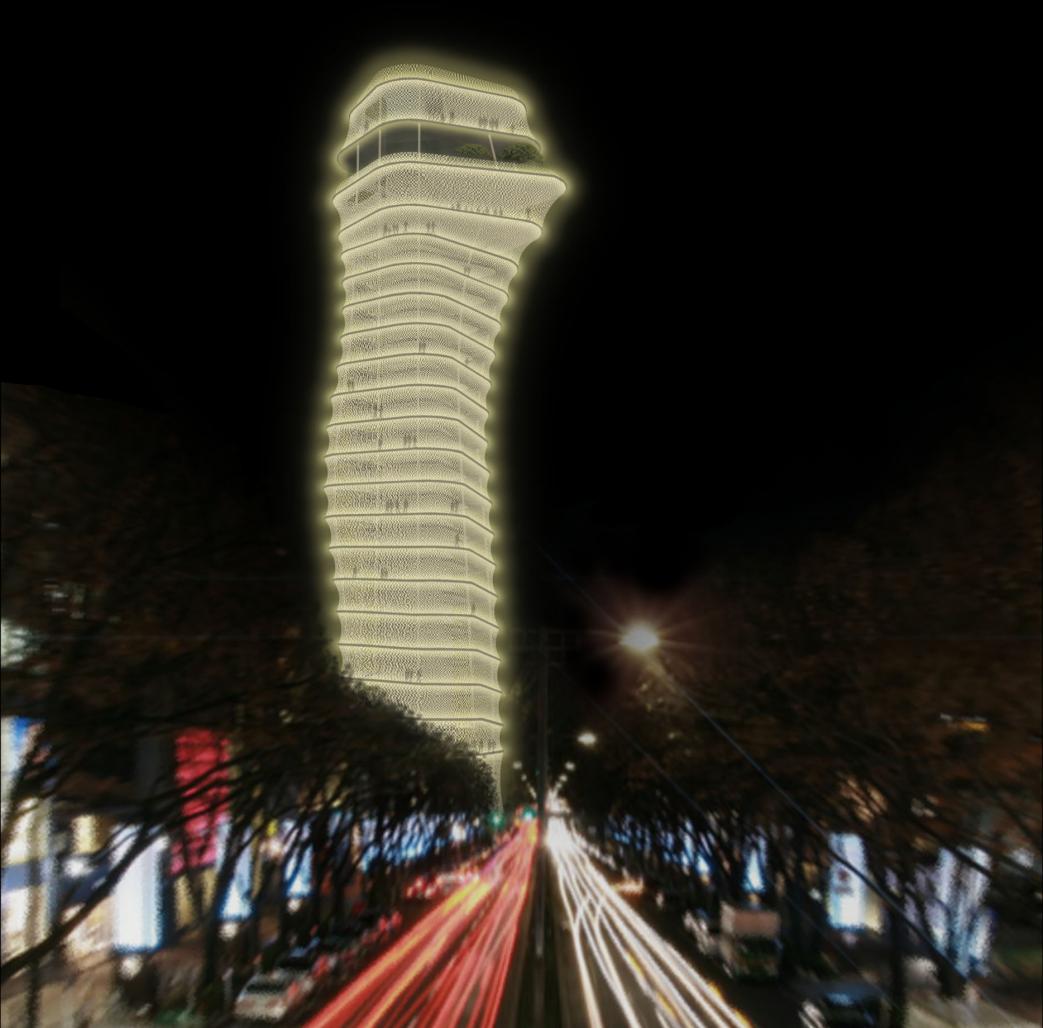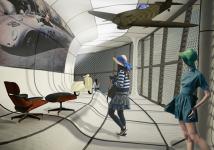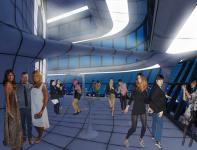The project was submitted to the architectural design competition for Tokyo Fashion Museum organized by Waseda University School of Arts and Architecture. A building providing innovative solutions to the requirements of the program while reflecting the unique characteristics of the notion of fashion was aimed during the design process. The problem of designing a vertical museum was solved by planning a circulation route taking visitors up to the highest exhibition level with elevators (“time machine”) from where they descend via ramps (“time tunnel”). The periods from 1920 to today were ordered in a way where the oldest is located at the highest floor whereas the contemporary is approached while going down to the street level. A continuous and fluid exhibition area is proposed where separation of display and circulation zones, dedication of each floor to a particular period and separation of periods are avoided. The 100m high tower required in the program was designed as a curvilinear building mass that is perceived as in motion due to the independently twisting and bulging floors. To benefit from daylight, the façade is wrapped with a glass curtain wall and an outer layer of metal mesh with varying density. With the exterior lighting by monochrome LEDs the tower will consequently turn into a giant “chochin” (traditional Japanese paper lamp) that will stand out amidst the chaotic colors of night time Tokyo.
2010
2010
Ali Manço, Aytaç Manço, Zuhtu Usta, Gufran Baykal



.jpg)

.jpg)
.jpg)

.jpg)
